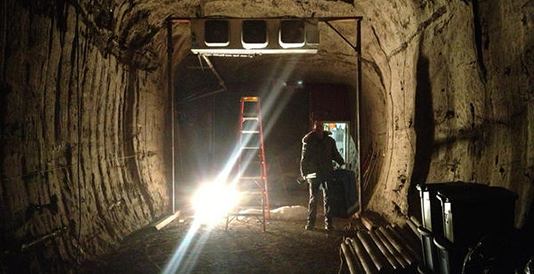 October 27, 2015 - Samples of permafrost soil from deep below the ground in an Alaskan tunnel are providing new clues in the quest to understand what exactly happens as northern regions of the world warm and begin to thaw. FSU doctoral student Travis Drake and Florida State University Assistant Professor in Earth, Ocean and Atmospheric Sciences Robert Spencer write in a new paper that permafrost organic material is so biodegradable that as soon as it thaws, the carbon is almost immediately consumed by single-cell organisms called microbes and then released back into the air as carbon dioxide, feeding the global climate cycle. Their findings are laid out in an article published today by the Proceedings of National Academy of Sciences. This is the first time scientists were able to quantify exactly how fast organic carbon from Alaskan permafrost is converted into carbon dioxide.
October 27, 2015 - Samples of permafrost soil from deep below the ground in an Alaskan tunnel are providing new clues in the quest to understand what exactly happens as northern regions of the world warm and begin to thaw. FSU doctoral student Travis Drake and Florida State University Assistant Professor in Earth, Ocean and Atmospheric Sciences Robert Spencer write in a new paper that permafrost organic material is so biodegradable that as soon as it thaws, the carbon is almost immediately consumed by single-cell organisms called microbes and then released back into the air as carbon dioxide, feeding the global climate cycle. Their findings are laid out in an article published today by the Proceedings of National Academy of Sciences. This is the first time scientists were able to quantify exactly how fast organic carbon from Alaskan permafrost is converted into carbon dioxide. "This study really shows what makes permafrost so biodegradable," said Drake, who completed the work while still an employee at the U.S. Geological Survey and master’s degree student at University of Colorado. "Immediately upon thaw, microbes start using the carbon and then it is sent back into the atmosphere."
FSU News Release
PNAS Journal Article











